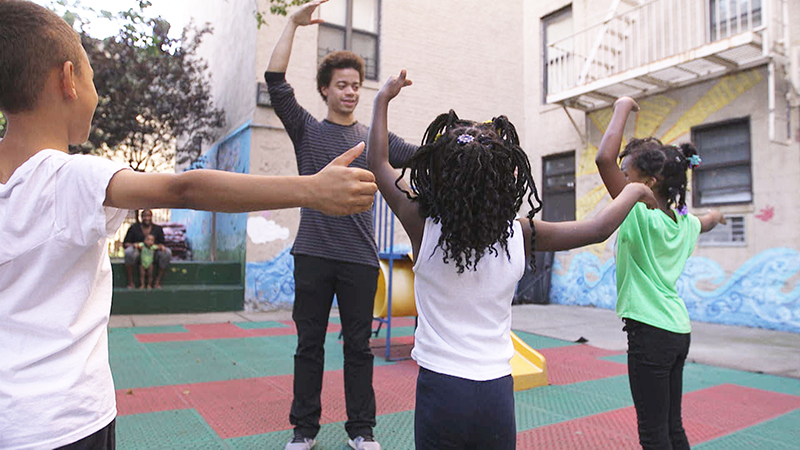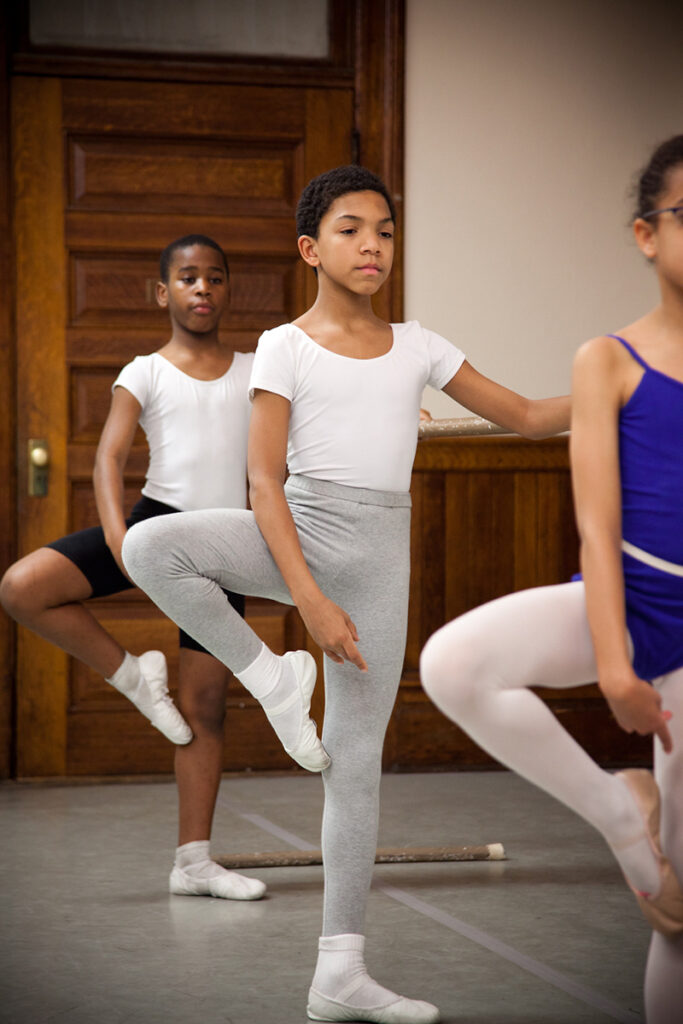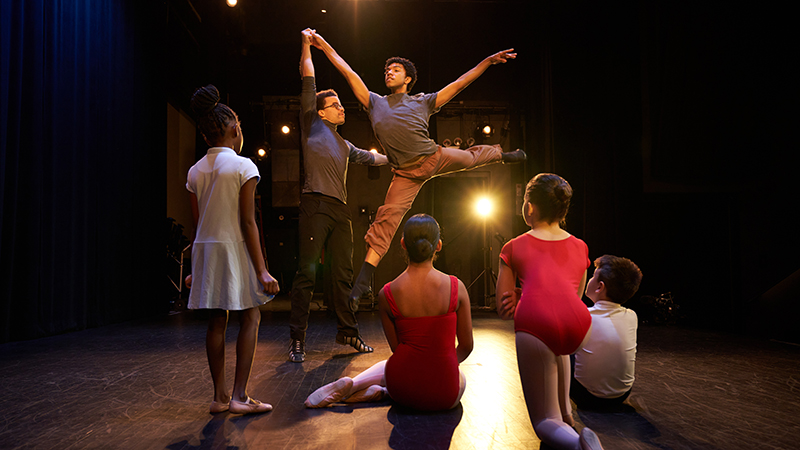A Balm for Kids Experiencing the Pain of Homelessness
BY BONNIE EISSNER
Steven Melendez remembers the first bow he took as a dancer when he was 8. He was living in a homeless shelter and had just danced in the Nutcracker.
“I appreciated the stroking of my ego as taking a bow and having people clap for me,” he said in a recent interview. “It’s a wonderful thing to have adulation and praise and bravos and all that.”
Through LIFT, a program that Diana Byer, founding artistic director of New York Theatre Ballet, started in 1989, Melendez and other housing insecure children received scholarships to the company’s dance school. For Melendez’s mother, a medical researcher raising two kids on her own, the program offered free childcare. For Melendez, the dance recitals gave him access to the stage and the attention he craved, especially in a society that treats people who are homeless as invisible, he said. He leapt from the shadows into the spotlight; by age 14, he started dancing professionally with New York Theatre Ballet.
Last year, at age 36, Melendez became the artistic director of New York Theatre Ballet, stepping into the role that Byer, who brought him to the company, had held since 1978.
And this month, his story is getting a wide airing with the nationwide release of the documentary LIFT. The film has won several awards including an Audience Award at last year’s Tribeca Film Festival, and its executive producer and principal advisor is Misty Copeland. The documentary centers on Melendez and three children living in shelters and public housing who join the LIFT program.

In a scene from LIFT, Steven Melendez teaches children at a New York City shelter. Photo courtesy of Paramount Pictures.
One of the kids is Victor Abreu, who started as a LIFT student when he was 10. He is now a member of the New York City Ballet’s corps de ballet.
Abreu’s triumphs and struggles, especially as he hits the turbulence of adolescence, unfold over the course of the film, which took Academy Award–nominated director David Petersen more than 10 years to make.

A young Victor Abreu takes classes at New York Theatre Ballet School. Photo by Heather Weston, courtesy of Paramount Pictures.
The film also portrays the dance and home lives of two other LIFT students — both girls.
Petersen spent so much time with the kids and families that by the end of the process he came to know them, he said. And while he edited out clichés about the neighborhoods where they live — footage of people living on the street or stealing burned out cars — he does portray their hardships. One family’s electricity is cut off due to unpaid bills. A mom loses a job; another mentions the worry of family hunger.
The film, though, revolves around Melendez. It opens when he, as the new director of LIFT, visits the shelter, Seneca Houses, where he lived from ages 7 to 10, to recruit students for the program. As he searches the building for where he and his family stayed, he passes out. “Going back to that shelter for the first time, there’s some trauma,” he reflects in the movie.
During the film, he explores the gut punch of losing his childhood home and how the years of homelessness and housing insecurity colored his life.
“I’d spent quite a bit of time trying to get away from my childhood and my background,” Melendez said, “because I didn’t see how it would serve me. In fact, I saw it often as a detriment. I felt like it was difficult for me to gain accolades or praise for the work that I was doing.”
After starting his career with New York Theatre Ballet, Melendez moved to Argentina to dance as a soloist with Ballet Concierto, then joined the Estonian National Ballet and danced with other companies internationally. “I moved away to prove I could be a dancer,” he says in the film.
When the filming began in 2011, Melendez was 25. “I still saw myself as a classical dancer,” he said, “not as an advocate, not really as a teacher, not as a person who was speaking for people that can’t speak for themselves.”
But over the course of LIFT, Melendez’ perspective shifts. “As the filming process went on,” Melendez said, “I went through a sort of weekly or monthly, for lack of a better word, almost like a therapy session.” He began to think about his childhood and what it meant or didn’t mean, he said.
“Who I am now and the position I’m at now as a director of New York Theatre Ballet and the mission that I have, personally, and the mission of the company has shifted slightly from where it was before,” Melendez said. “I don’t know that it would be if not for the process of going through making this film. It helped me mature in a direction as a person, let alone as an artist, in a way that I don’t know that I was on track for 10 years ago.”
At one point in the film, Melendez reflects on Victor Abreu’s budding career and how it mirrors his own trajectory. “I hope that Victor will be able to use his background and see where he is different from the dancers that have come before him, to see what secret weapon he has, I suppose, to confront the world.”

Steven Melendez (left) guides Victor Abreu at a rehearsal. Photo courtesy of Paramount Pictures.
And towards the end of the film, Melendez does just that. He choreographs a dance for the LIFT students about emerging from poverty.
The curtain call for that recital makes Petersen, the director, cry every time he sees his film.
“I’m looking at those kids, and I know where they came from; I know their families. I know where they are now after the film was finished, and I see their eyes, and I see the families crying,” Petersen said. “And I’m crying with them because that adulation, that applause, that sense of self-worth is so powerful and moving to me, and it never gets old. And that’s I think why we made the film — for that moment.”
~~
LIFT was released in select theaters on September 15th and has been available to rent or buy digitally since September 22nd.

5 Responses to “A Balm for Kids Experiencing the Pain of Homelessness”
Thank you Ellyn! Glad you enjoyed the story and hope you enjoy the film too!
What a wonderful and inspiring story, thank you for sharing it with us through the LiIFT documentary and this beautiful article. I look forward to watching Lift and sharing it with my friends.
Thanks for sharing Nancy, and hope it inspires you!
This is wonderful and so inspiring! My son studied dance until he was in his teens.
I taught children for many years and I still volunteer at a children’s center for homeless and at-risk children. But I never thought about dance scholarships as a way of salvation for children needing
something special. I’ll look into this here.
Thanks!
Love this!
Comments are closed.